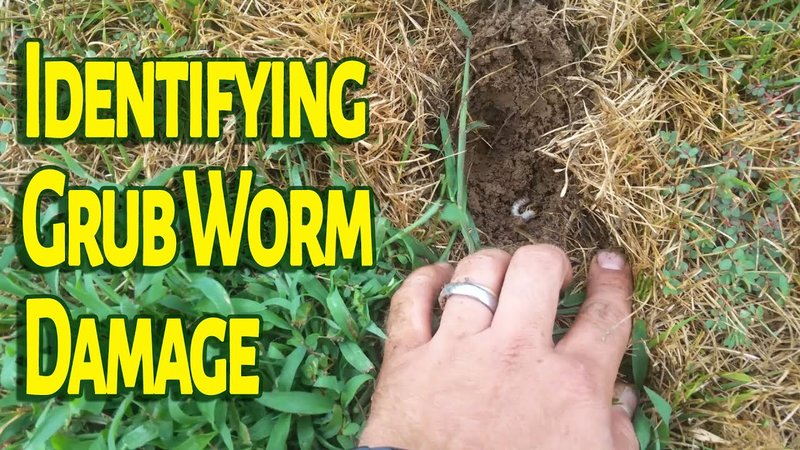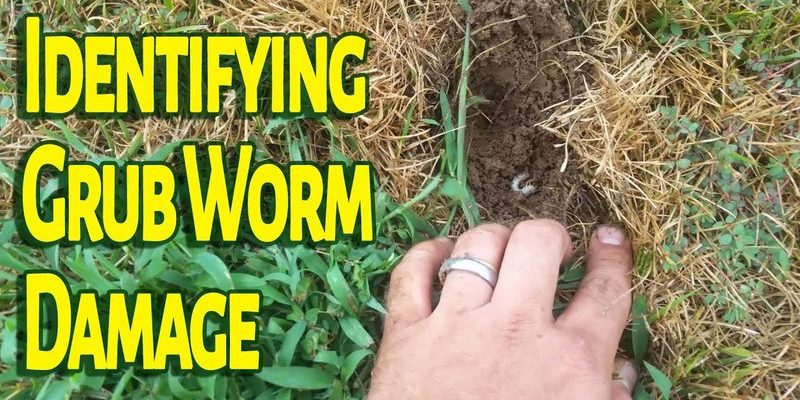
Understanding the signs that birds are enjoying a meal of grub worms is like being a detective in your own backyard. Spotting these clues can help you learn more about the ecosystem in your yard and even inspire you to take better care of it. So, grab a cup of coffee, and let’s dive into these signs and what they mean.
What Are Grub Worms?
First things first, let’s clarify what we’re talking about. Grub worms, often referred to as “grubs,” are the larval stage of various beetles. They live beneath the soil, munching on plant roots and organic matter. You might have heard of the common Japanese beetle or the June bug—those little guys come from grubs. If you see patches of your grass looking brown or unhealthy, grubs might be the culprits.
Now, why do birds love grubs? It’s simple: they’re a protein-packed snack that’s usually easy for birds to dig up. Think of grubs as the birds’ version of a well-balanced meal. Birds, especially during the nesting season, need nutritious food to raise their young. If your yard is a buffet of these tasty morsels, expect to see more avian guests.
Signs of Birds Feeding on Grub Worms
So, how can you tell that birds are having a feast on grub worms in your yard? Here are some signs to watch for:
- Increased Bird Activity: If you notice more birds than usual, especially during spring and early summer, they might be hunting for grubs.
- Birds Scratching at the Ground: Watch for birds hopping around and scratching at the soil. This behavior indicates they’re searching for food.
- Uneven or Damaged Lawn: Patches of grass that appear to be dug up or have visible holes might suggest that birds or other critters are looking for grubs.
Think about the last time you spotted a group of robins or starlings pecking around your lawn. If they’re scratching at the ground, you might just have a buffet of grubs beneath their feet. This activity can often lead to a healthier ecosystem, so seeing birds is usually a good sign.
Bird Species That Feed on Grubs
While many birds enjoy snacking on grubs, some species are particularly fond of them. Here are a few to look out for:
- Robins: These birds are famous for their brownish-red breasts and are often seen hopping around lawns, searching for worms and grubs.
- Starlings: Often overlooked, starlings also scratch around for insects and larvae, including grubs.
- Blackbirds: Known for their glossy feathers, blackbirds will often forage in groups, looking for grubs and other insects.
Each of these birds plays a role in controlling grub populations. So, if you have a yard full of robins and starlings, you’re likely keeping those pesky grubs in check!
How Birds Benefit Your Yard
Having birds in your yard isn’t just exciting to watch; it’s actually beneficial for your garden or lawn. Here’s how:
- Pest Control: Birds help control insect populations by feeding on grubs and other pests, reducing the need for chemical pesticides.
- Soil Aeration: As birds scratch the ground looking for food, they help aerate the soil, allowing better water flow and root growth.
- Natural Fertilization: When birds feed and move around, they contribute to the nutrient cycle through their droppings, enriching the soil naturally.
With all these benefits, having birds around can turn your yard into a flourishing ecosystem. It’s like nature’s way of promoting a healthy environment without any effort on your part.
Encouraging Birds to Your Yard
Want to attract more birds to your yard? There are several easy ways to create an inviting space:
- Plant Native Shrubs and Flowers: These plants provide food and shelter for birds, making your yard more appealing.
- Provide Fresh Water: Birds need water for drinking and bathing. A birdbath or a clean bowl of water will do the trick!
- Avoid Chemical Pesticides: By keeping your yard chemical-free, you’ll create a healthier environment for birds and beneficial insects.
Think of your yard as a welcoming café for birds. The more inviting it is, the more likely they’ll stop in for a meal.
What to Do If You Have Too Many Grubs
If you find that your lawn is getting overrun with grubs, it’s essential to address the issue. Here’s how:
- Natural Predators: Encourage birds and beneficial insects, like nematodes, to control grub populations naturally.
- Healthy Lawn Practices: Keep your grass healthy through regular mowing, watering, and aeration to help reduce grub populations.
- Organic Treatments: If necessary, consider organic insecticides that target grubs without harming birds and other wildlife.
It’s possible to manage the grub situation without resorting to harmful chemicals, creating a healthier environment for both your yard and the birds.
Watching birds feed on grub worms in your yard is more than just a charming scene; it’s a sign of a lively ecosystem at work. By keeping an eye out for those telltale signs, you can learn a lot about the health of your yard and help foster a welcoming habitat for birds and other wildlife.
In the end, creating a balance between your lawn and garden’s health and attracting birds can turn your yard into a vibrant sanctuary. So, grab that cup of coffee and sit back; nature’s show is just getting started!

